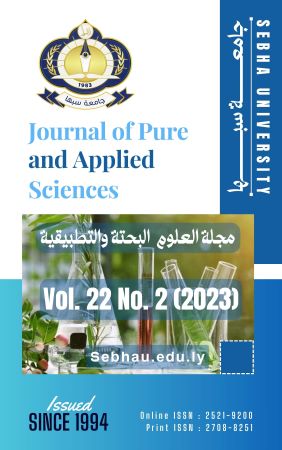Impact of Hydrochloric acid on breaking seed dormancy and germination enhancement in native Alhagi graecorum Boiss ( Al-Agool ).
Abstract
Despite the great importance of legumes plants, most of them have a hard and impermeable testa, which causes physical dormancy of the seeds and prevents germination even when environmental conditions are favorable. This is considered one of the major problems in successful seed germination. Alhagi graecorum plant is a wild native legume. It has a hard and impermeable testa, which causes physical dormancy of seeds, and to overcome hard coat imposed dormancy, softening the hard seed coat by soaking Hydrochloric acid ( HCl ). The present study was conducted to evaluate various duration of soaking seeds in HCL to breaking physical dormancy for A.graecorum in 10, 20, and 30 minutes. The results showed that, final germination percentage (FGP) in treated seeds significantly increased when compared with the control were 55, 62 and 68 % respectively, while in control was only 12 %. Seed germination influenced by HCL is due to its capability to break the hard seed coat that leads to water absorption and imbibition of seeds. As for the mean daily germination ( MDG ), the results revealed that, there were significance increased in seventh day of sowing in germination between the treated seeds in duration of soaking 20 and 30 min were 23 and 24 % respectively, as they were most effective in germination, while the germination in the control stopped in the fifth day of sowing at 12 %. While the mean germination time (MGT), the results indicated that the seeds soaked in acid recorded 9.66, 9.13, and 8.62 days, respectively. The minimum MGT for treated seeds was detected in 30 min., 8.62 days. The reason for the long period of the mean germination time may be due to the use of a low concentration of hydrochloric acid, so I recommend using higher concentrations of acid to obtain a lower mean germination time.
Full text article
Authors
Copyright (c) 2023 Journal of Pure & Applied Sciences

This work is licensed under a Creative Commons Attribution 4.0 International License.
In a brief statement, the rights relate to the publication and distribution of research published in the journal of the University of Sebha where authors who have published their articles in the journal of the university of Sebha should how they can use or distribute their articles. They reserve all their rights to the published works, such as (but not limited to) the following rights:
- Copyright and other property rights related to the article, such as patent rights.
- Research published in the journal of the University of Sebha and used in its future works, including lectures and books, the right to reproduce articles for their own purposes, and the right to self-archive their articles.
- The right to enter a separate article, or for a non-exclusive distribution of their article with an acknowledgment of its initial publication in the journal of Sebha University.
Privacy Statement The names and e-mail addresses entered on the Sabha University Journal site will be used for the aforementioned purposes only and for which they were used.





